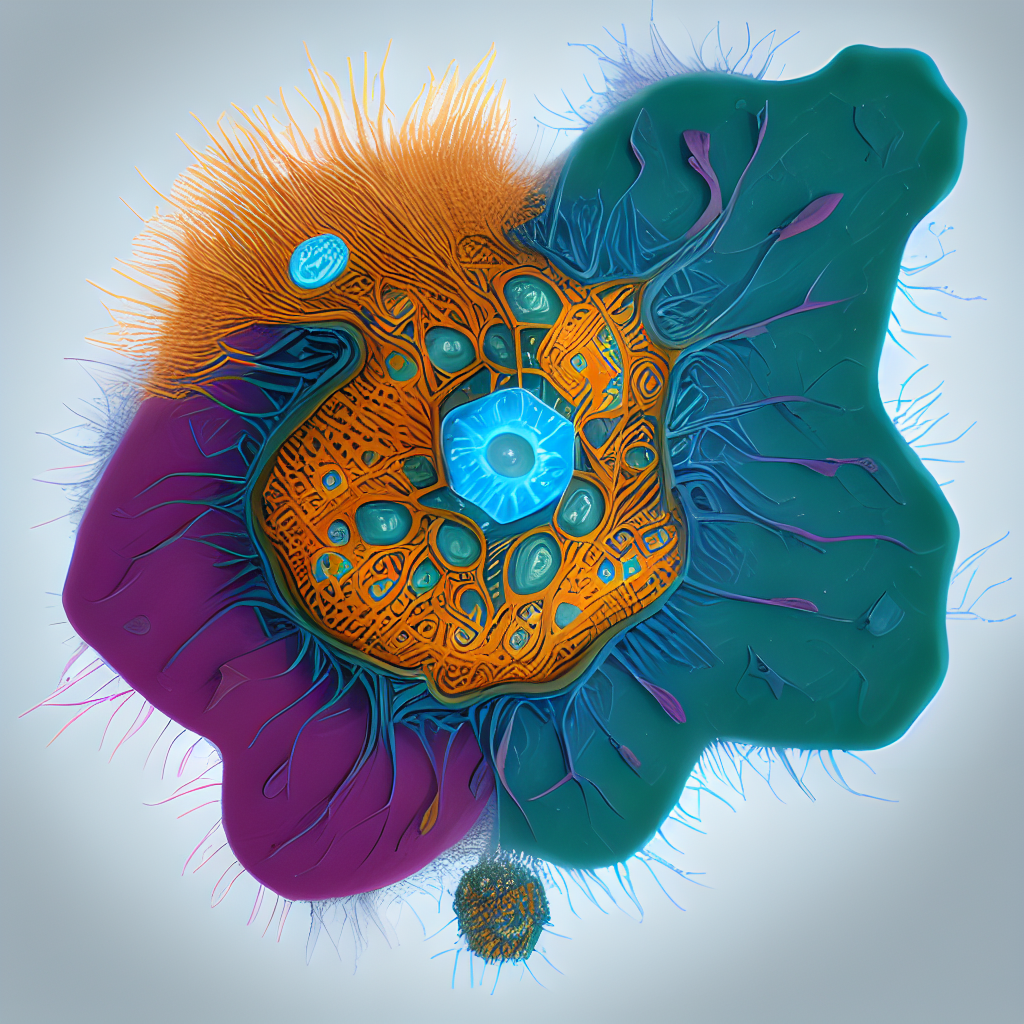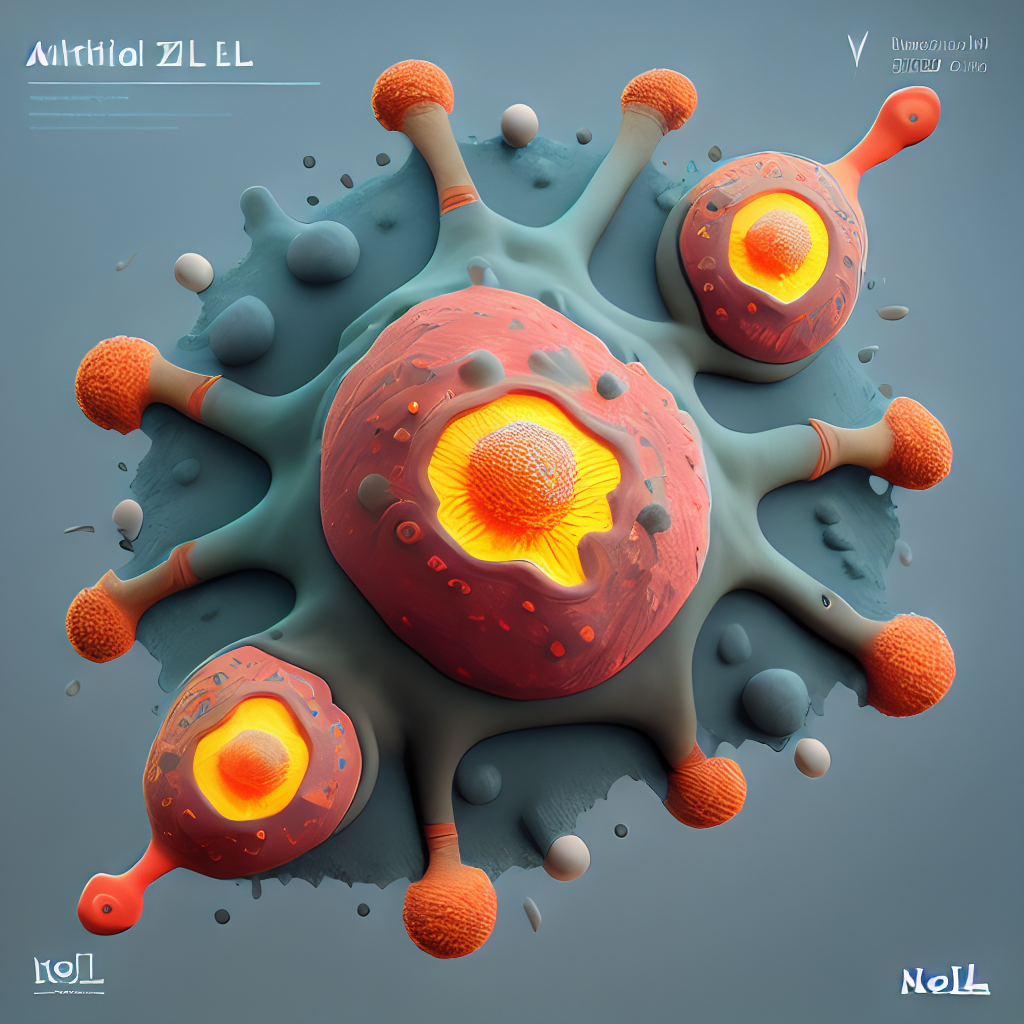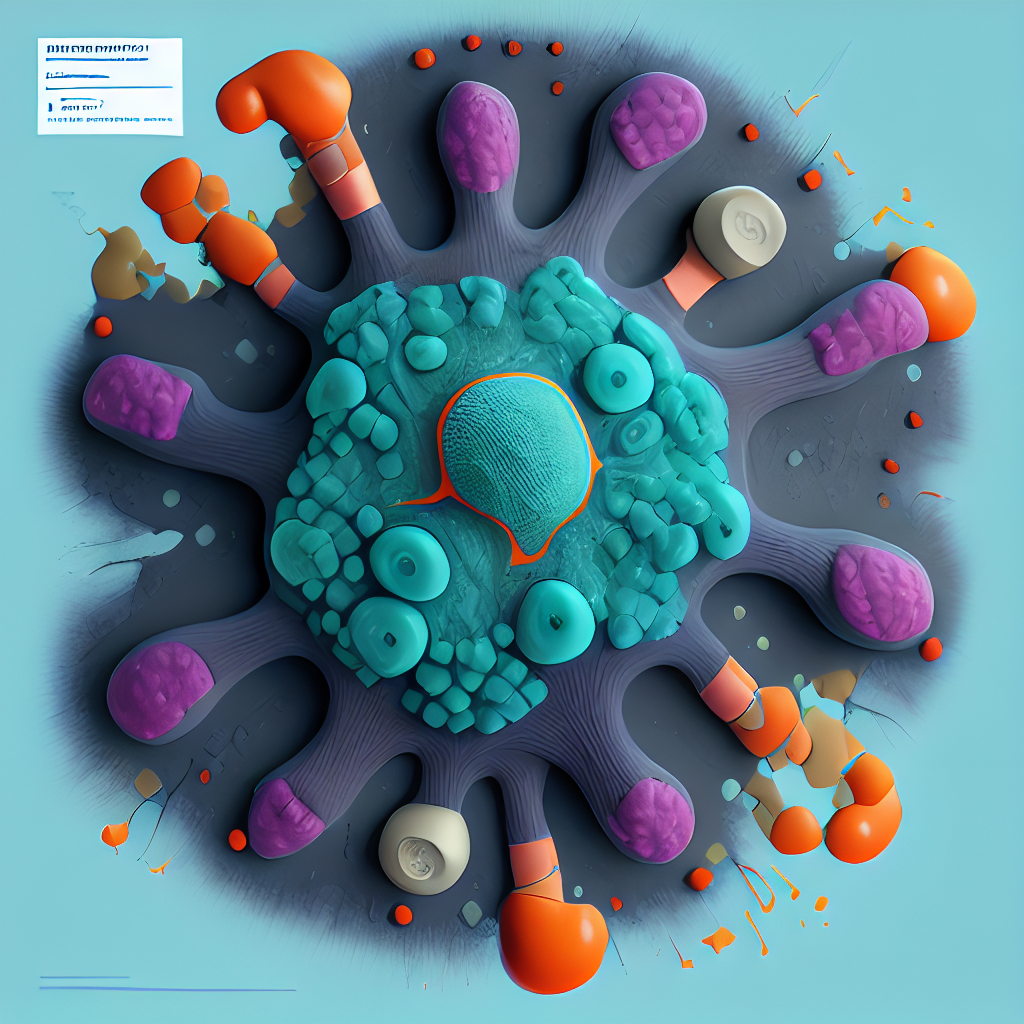Nodal Marginal Zone Lymphoma: Symptoms & Treatments Guide

Nodal marginal zone B cell lymphoma (NMZL) accounts for about 30% of marginal zone lymphoma cases. This type of cancer often progresses slowly, but early recognition of symptoms related to nodal marginal zone B cell lymphoma can make a significant difference in treatment outcomes. You might notice swollen lymph nodes, fatigue, or unexplained weight loss. These signs should prompt you to seek medical advice. Understanding available treatments for nodal marginal zone B cell lymphoma, such as chemotherapy or immunotherapy, empowers you to make informed decisions. By staying vigilant and informed, you can take control of your health and improve your chances of a positive outcome.
Key Takeaways
Look for signs like swollen lymph nodes, tiredness, and weight loss. Finding it early can help with better treatments.
Learn about treatments like chemo, immunotherapy, and radiation. Talk to your doctor to choose what works best for you.
Keep track of your health. Regular check-ups help recovery and catch problems early.
Live healthy during treatment. Eat good food, exercise, and avoid bad habits to feel better.
Think about joining clinical trials. They give new treatments and help improve lymphoma care.
What Is Nodal Marginal Zone B-Cell Lymphoma?
Overview and Characteristics
Nodal marginal zone B cell lymphoma is a rare type of non-Hodgkin lymphoma that originates in the lymph nodes. It develops from B-cells, a type of white blood cell responsible for producing antibodies to fight infections. This lymphoma progresses slowly, often classified as an indolent cancer. Genomic studies have shown that mutations in key signaling pathways, such as NOTCH, NF-κB, and B-cell receptor pathways, disrupt the normal development of B-cells into marginal zone B-cells. These genetic and epigenetic changes play a critical role in the disease's onset.
You may find this type of lymphoma challenging to detect early because its symptoms often overlap with other conditions. However, understanding its biological mechanisms can help you recognize its unique characteristics and seek timely medical advice.
How It Differs from Other Lymphomas
Nodal marginal zone B cell lymphoma differs from other lymphomas in its origin and behavior. Unlike diffuse large B-cell lymphoma, which grows aggressively, this type progresses more slowly. It primarily affects lymph nodes, whereas other marginal zone lymphomas, such as mucosa-associated lymphoid tissue (MALT) lymphoma, often develop in tissues like the stomach or lungs.
Another distinction lies in its genetic profile. Mutations in pathways like NF-κB are more common in nodal marginal zone B cell lymphoma, influencing its growth and response to treatment. Recognizing these differences can help you understand why treatment approaches vary between lymphoma types.
Risk Factors and Who Is Affected
Several factors may increase your risk of developing nodal marginal zone B cell lymphoma. These include genetic predispositions, infections, and autoimmune disorders. The table below highlights some of the most common risk factors:
Risk Factor | Description |
|---|---|
Family history of lymphoma | A significant risk factor for marginal zone lymphoma (MZL). |
Infectious agents | Includes bacteria like H. pylori and Chlamydophila psittaci. |
Autoimmune disorders | Conditions like lupus and Sjögren syndrome increase risk. |
Occupational exposure | Metal workers face a higher risk of nodal MZL. |
Chronic hepatitis C infection | Linked to increased risk for nodal marginal zone lymphoma. |
Understanding these risk factors can help you assess your likelihood of developing this condition. If you fall into any of these categories, consider discussing your concerns with a healthcare provider.
Symptoms of Nodal Marginal Zone B-Cell Lymphoma

Common Symptoms
Swollen lymph nodes
One of the most noticeable symptoms of nodal marginal zone B cell lymphoma is swollen lymph nodes. You may feel lumps under your skin, especially in areas like your neck, armpits, or groin. These lumps are usually painless but can grow larger over time. If you notice persistent swelling in these areas, it’s important to consult a healthcare provider.
Fatigue and weakness
Feeling unusually tired or weak is another common symptom. This type of fatigue doesn’t go away with rest and can interfere with your daily activities. You might find it harder to concentrate or complete tasks that were once easy. This symptom often occurs because your body is using extra energy to fight the disease.
Night sweats, fever, and weight loss
You might experience night sweats that soak your clothes and bedding. Fevers without an obvious cause, such as an infection, can also occur. Additionally, unexplained weight loss is a red flag. If you lose more than 10% of your body weight within six months without trying, it’s time to seek medical advice.
Less Common Symptoms
Less common symptoms of nodal marginal zone B cell lymphoma include abdominal pain, chest discomfort, or difficulty breathing. These symptoms may occur if the lymphoma spreads to other parts of your body, such as the spleen or lungs. You might also notice skin rashes or itching, though these are rare.
When to Seek Medical Attention
You should seek medical attention if you notice persistent swollen lymph nodes, unexplained fatigue, or any of the other symptoms mentioned. Early diagnosis can improve your treatment options and outcomes. Don’t ignore symptoms that last for weeks or worsen over time. A healthcare provider can perform tests to determine the cause and guide you toward the right treatment.
Diagnosing Nodal Marginal Zone B-Cell Lymphoma
Initial Evaluation and Medical History
Diagnosing nodal marginal zone B cell lymphoma begins with a thorough evaluation of your symptoms and medical history. Your doctor will ask about any persistent swollen lymph nodes, fatigue, or unexplained weight loss. They may also inquire about your family history of lymphoma or autoimmune disorders. A physical exam will help identify any noticeable lumps or abnormalities in your lymph nodes. This initial step sets the foundation for further diagnostic tests.
Diagnostic Tests
To confirm the diagnosis, your healthcare provider will recommend several tests. These tests help determine the presence of lymphoma and its extent in your body.
Blood tests
Blood tests play a crucial role in the diagnostic process. A complete blood count (CBC) evaluates your blood cell levels, which can indicate abnormalities. Additional tests may check for infections like hepatitis C or HIV, as these can increase the risk of lymphoma.
Imaging scans
Imaging scans, such as CT scans, help locate the spread of cancer. These scans provide detailed images of your lymph nodes and other organs, allowing doctors to assess the extent of the disease.
Lymph node biopsy
A biopsy is the most definitive way to diagnose nodal marginal zone B cell lymphoma. During this procedure, a small sample of tissue is taken from a swollen lymph node. Pathologists then examine the sample under a microscope to confirm the presence and subtype of lymphoma.
Other diagnostic methods, such as bone marrow aspiration or esophagogastroduodenoscopy (EGD), may be used in specific cases to gather additional information.
Staging and Its Importance
Staging determines how far the lymphoma has spread and guides your treatment plan. Early-stage disease, confined to a few lymph nodes, often responds well to localized treatments like radiotherapy. Advanced stages may require different approaches, such as watchful waiting or chemo-immunotherapy. Staging also evaluates bone marrow involvement, which can affect your prognosis. Understanding the stage of your lymphoma helps you and your doctor make informed decisions about your care.
Treatment Options for Nodal Marginal Zone B-Cell Lymphoma

Watchful Waiting
In some cases, your doctor may recommend watchful waiting instead of immediate treatment. This approach works best if your nodal marginal zone B cell lymphoma progresses slowly and doesn’t cause significant symptoms. Regular check-ups and monitoring allow your healthcare provider to track the disease’s progression. You won’t undergo unnecessary treatments, which helps you avoid potential side effects. However, if symptoms worsen or the disease advances, your doctor will discuss starting active treatment.
Chemotherapy and Immunotherapy
Chemotherapy and immunotherapy often work together to treat nodal marginal zone B cell lymphoma. Chemotherapy uses drugs to kill cancer cells, while immunotherapy boosts your immune system to fight the disease. Common chemotherapy regimens include:
BR (bendamustine and rituximab)
R-CHOP (rituximab, cyclophosphamide, doxorubicin, vincristine, and prednisone)
R-CVP (rituximab, cyclophosphamide, vincristine, and prednisone)
Chlorambucil and rituximab
Cyclophosphamide and rituximab
Description | |
|---|---|
Rituximab + Chemo | Commonly used with either a single drug or combination |
Bendamustine | A single chemotherapy drug option |
CHOP | Combination of cyclophosphamide, doxorubicin, vincristine, prednisone |
CVP | Combination of cyclophosphamide, vincristine, prednisone |
Immunotherapy options like lenalidomide and rituximab (R2) also show promise. These treatments improve outcomes by targeting cancer cells while preserving healthy ones. Your doctor will choose a regimen based on your overall health and the stage of your lymphoma.
Targeted Therapy
Targeted therapy focuses on specific molecules in cancer cells, blocking their growth and survival. This approach minimizes damage to healthy cells. Drugs like rituximab are commonly used, either alone or alongside chemotherapy. Newer options, such as zanubrutinib and ibrutinib, offer hope for patients with advanced or resistant nodal marginal zone B cell lymphoma.
Therapy | Complete Response (CR) | Partial Response (PR) | Time to Response | |
|---|---|---|---|---|
Zanubrutinib | 65% | 26% | 42% | 3 months |
Ibrutinib | Varies | 5% | 43% | 12 months |
These advancements provide more personalized treatment options, improving your chances of managing the disease effectively.
Radiation Therapy
Radiation therapy (RT) plays a vital role in treating nodal marginal zone B cell lymphoma, particularly in early-stage cases. It offers excellent local control, making it a preferred option for localized disease. Studies show that patients with stage I primary nodal disease who received 40 Gy of RT without chemotherapy remained disease-free for years. For instance:
Three patients treated with RT alone are alive without disease.
One patient experienced a relapse after 24 months but was successfully treated surgically and remains in remission.
This suggests that RT alone could be a viable option for low-stage primary nodal disease.
Finding | Detail |
|---|---|
Local Control | RT provides excellent local control in early-stage MZL. |
Overall Survival | RT contributes to favorable overall survival rates for localized MZL. |
Salvage Therapy | RT is effective as a salvage therapy for localized recurrences. |
Optimal Dose | The optimal radiation dose for low-stage primary nodal disease is still under research. |
Radiation therapy also serves as a salvage treatment for localized recurrences, offering hope for patients whose disease returns. While RT is effective, your doctor will determine the best approach based on your disease stage and overall health.
Stem Cell Transplants
Stem cell transplants provide another treatment option, especially for patients with relapsed or refractory nodal marginal zone B cell lymphoma. This procedure involves replacing damaged bone marrow with healthy stem cells, either from your own body (autologous) or a donor (allogeneic).
Long-term outcomes highlight the potential benefits of this approach. After a median follow-up of five years:
5-year event-free survival (EFS): 53%
5-year cumulative incidence of relapse/progression: 38%
5-year non-relapse mortality: 9%
5-year cumulative incidence of second malignancies: 6%
These statistics demonstrate that stem cell transplants can improve survival rates and offer a chance for long-term remission. However, this treatment carries risks, including the possibility of relapse or complications. Your healthcare team will evaluate whether this option suits your specific case.
Emerging Treatments and Clinical Trials
Emerging treatments and clinical trials continue to expand the options for managing nodal marginal zone B cell lymphoma. Clinical trials explore innovative therapies, offering hope for patients seeking alternatives to standard treatments. These trials often include:
Watchful waiting for slow-progressing cases.
Radiation therapy for localized disease.
Chemoimmunotherapy, such as bendamustine and rituximab or R-CHOP.
Newer therapies, like immunotherapy with lenalidomide and rituximab (R2), show promise in improving outcomes. Specialized centers may also offer targeted therapies, including zanubrutinib and ibrutinib, which focus on specific cancer cell pathways. Participating in clinical trials gives you access to cutting-edge treatments while contributing to advancements in lymphoma care.
If you’re considering emerging treatments, consult your doctor to determine whether a clinical trial aligns with your needs and goals.
Prognosis and Long-Term Management
Survival Rates and Outlook
The prognosis for nodal marginal zone B cell lymphoma varies depending on the stage at diagnosis and your overall health. Early-stage disease often has a favorable outlook, with many patients achieving long-term remission. Advanced stages may require more intensive treatments, but survival rates remain encouraging. Studies show that five-year survival rates for indolent lymphomas like this one can exceed 70%. Regular follow-ups and adherence to treatment plans play a crucial role in improving outcomes.
Managing Treatment Side Effects
Treatments for nodal marginal zone B cell lymphoma can cause side effects that impact your quality of life. Chemotherapy and immunotherapy, while effective, may lead to fatigue, nausea, or diarrhea. Targeted therapies like BTK inhibitors, such as ibrutinib, can result in bleeding, high blood pressure, or joint pain. Radiation therapy may cause localized issues like dry mouth or difficulty swallowing.
Side Effect | Frequency |
|---|---|
Grade 3 conjunctivitis | |
Cataract formation | Surgical extraction in 4 patients |
Acute side effects (diarrhea, nausea, stomach pain) | 37% in stomach lymphoma patients |
Acute mucositis | Observed in 4 cases |
Xerostomia | Observed in 4 cases |
Dysphagia | Observed in 4 cases |
Managing these side effects involves working closely with your healthcare team. They may recommend medications, dietary changes, or physical therapy to help you cope. Staying hydrated and maintaining a balanced diet can also reduce the severity of symptoms.
Lifestyle Adjustments and Supportive Care
Adopting a healthy lifestyle can improve your overall well-being during and after treatment. Regular exercise, even light activities like walking, helps boost energy levels and reduce fatigue. A nutrient-rich diet supports your immune system and aids recovery. Avoiding tobacco and limiting alcohol intake can further enhance your health.
Supportive care, including counseling or joining a support group, provides emotional relief. Sharing experiences with others facing similar challenges can reduce stress and feelings of isolation. You should also prioritize follow-up appointments to monitor your progress and address any concerns promptly. These adjustments empower you to take control of your health and improve your quality of life.
Importance of Follow-Up Care
Follow-up care plays a crucial role in managing nodal marginal zone B-cell lymphoma. After completing treatment, you need regular check-ups to monitor your health and detect any signs of recurrence early. These visits allow your doctor to assess how well your body is recovering and address any lingering side effects from treatment.
Tip: Keep a detailed record of your symptoms and share them during follow-up appointments. This helps your healthcare team provide better care.
During follow-up care, your doctor may recommend tests such as blood work or imaging scans. These tests help track your progress and ensure the lymphoma remains under control. If any abnormalities appear, your doctor can adjust your treatment plan promptly.
Here are some key reasons why follow-up care is essential:
Early Detection of Recurrence: Regular monitoring increases the chances of catching a relapse early when it is easier to treat.
Managing Side Effects: Treatments like chemotherapy or radiation can cause long-term effects. Follow-up care helps you manage these issues effectively.
Emotional Support: Follow-up visits provide an opportunity to discuss any emotional challenges you face. Your doctor can connect you with support groups or counseling services.
Consistency is key. Missing follow-up appointments can delay the detection of complications or recurrence. Set reminders for your appointments and stay proactive about your health. By prioritizing follow-up care, you take an active role in maintaining your well-being and improving your quality of life.
Early detection of nodal marginal zone B-cell lymphoma improves your chances of successful treatment. Recognizing symptoms like swollen lymph nodes or unexplained fatigue should prompt you to consult a healthcare provider. Multiple treatment options, including chemotherapy and immunotherapy, offer hope for managing this condition.
Note: Support resources can guide you through this journey.
Resource | Description |
|---|---|
Research studies exploring innovative treatments and symptom management. |
Stay informed and proactive. Accessing these resources empowers you and your family to navigate the challenges of this diagnosis with confidence.
FAQ
What is the difference between nodal marginal zone B-cell lymphoma and other types of lymphoma?
Nodal marginal zone B-cell lymphoma progresses slowly and originates in lymph nodes. Other types, like diffuse large B-cell lymphoma, grow aggressively. MALT lymphoma develops in tissues outside the lymph nodes, such as the stomach. Understanding these differences helps you recognize the unique characteristics of each type.
Can nodal marginal zone B-cell lymphoma be cured?
This lymphoma is often manageable but not always curable. Many patients achieve long-term remission with treatments like chemotherapy, immunotherapy, or radiation. Early detection and personalized care improve your chances of controlling the disease effectively.
How often should you have follow-up appointments after treatment?
Your doctor will recommend follow-ups every 3-6 months initially. These visits may become less frequent over time. Regular check-ups help monitor your recovery, detect recurrence early, and manage any lingering side effects from treatment.
Are there lifestyle changes that can help during treatment?
Yes, adopting a healthy lifestyle supports your recovery. Eat a balanced diet, stay hydrated, and engage in light exercise like walking. Avoid smoking and limit alcohol. These changes boost your energy and strengthen your immune system.
Should you consider clinical trials for treatment?
Clinical trials offer access to innovative therapies and cutting-edge treatments. If standard options don’t work or you want to explore new possibilities, ask your doctor about trials. Participating helps advance research while providing you with additional treatment options.
Tip: Always discuss clinical trial risks and benefits with your healthcare provider before enrolling.
See Also
Exploring Symptoms and Therapies for Large Granular Lymphocytic Leukemia
Exploring Symptoms and Care for Lymphomatoid Granulomatosis
Simplifying B-Cell Prolymphocytic Leukemia and Its Basics
